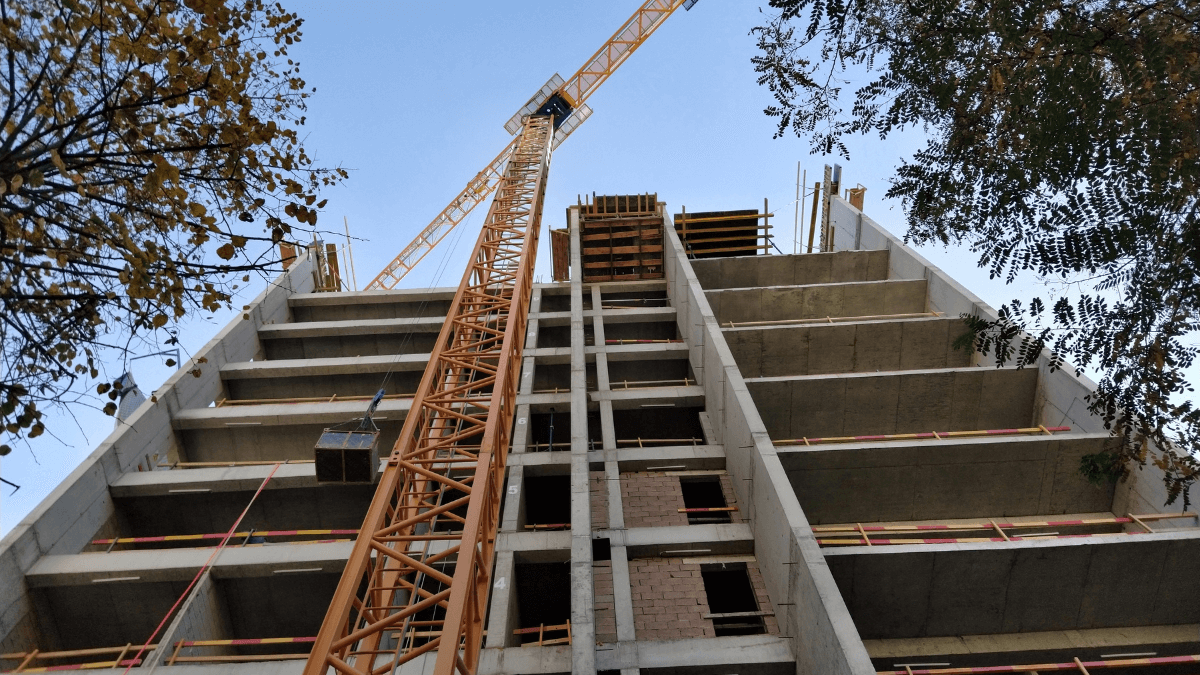Asset tracking has been around for a long time. It’s an important aspect of any business’s operations.
Our approach to it changed over time, though, and we’ve been able to come up with new and different asset monitoring and management solutions.
One such exciting technology is Bluetooth (BLE) beacon systems.
Tracking with beacons has many advantages over some of the other solutions, such as RFID, NFC, barcode, or even, in some cases, GPS.
In this article, we cover these benefits and get into how exactly such tiny devices can improve your asset management and boost your overall productivity.
In this article...
Easy Implementation and Use
Is a tool actually useful if it’s not being used?
An asset tracking system is a significant investment, so it’s vital for your employees to be on board with it and actually rely on this tool in order for the purchase to pay off.
However, if the system is too complicated to use, this is not very likely to happen. User-friendliness is key to new technology adoption.

Bluetooth beacons are an asset tracking solution favored by many businesses across different industries.
Part of that popularity is earned precisely through their easy implementation and utilization.
To get started with beacon asset tracking, only three things are needed:
- Bluetooth beacons
- Receivers
- Software or app
Once you install your Bluetooth beacons, they’ll start broadcasting a signal that will be picked up by a receiver within a specific range.
Worry not, though. There’s no need to buy some kind of special, expensive receiver. A receiver can be any Bluetooth-enabled device, such as a smartphone or a tablet.
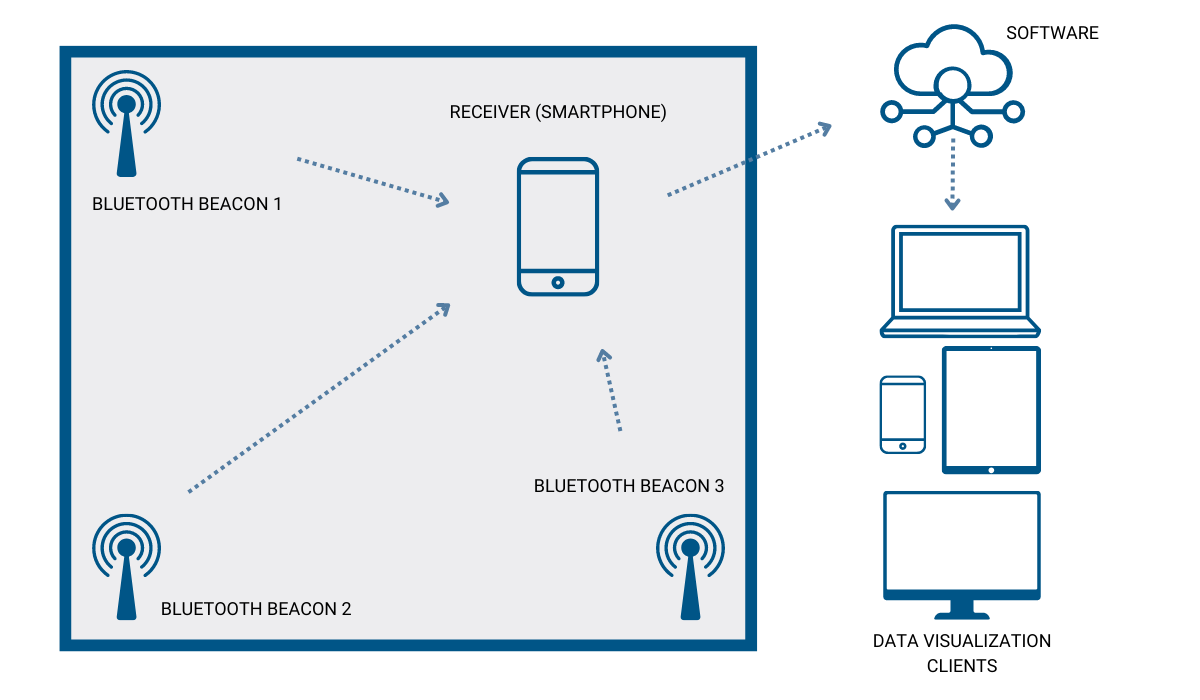
The transmitted data, such as, for instance, the asset’s location, is safely stored, in real-time, by software in the cloud and can then be accessed by anyone on the team, wherever and whenever needed.
As your business grows, you might decide more beacons are needed for successful asset tracking. No problem! The system is scalable, so you can add more beacons to it anytime.
In other words, the system will grow with your business without the need to replace the old infrastructure.
And the more beacons you have deployed, the more accurate the collected data will be.
High Return on Investment
Highly accurate asset data sounds great, but how much does it cost?
Bluetooth beacon asset tracking comes with its own set of expenses, of course, but it’s still among the most cost-effective solutions out there.
For starters, the beacons themselves are easy to maintain, and the system doesn’t require any kind of special infrastructure, which reduces the total cost of ownership.
Besides, the devices are reusable, meaning you don’t have to keep buying new ones for each different task.
However, the real value beacons provide lies precisely in the data they supply.
Before we elaborate on this, let’s take a look at FMI’s and Autodesk’s definition of bad data.
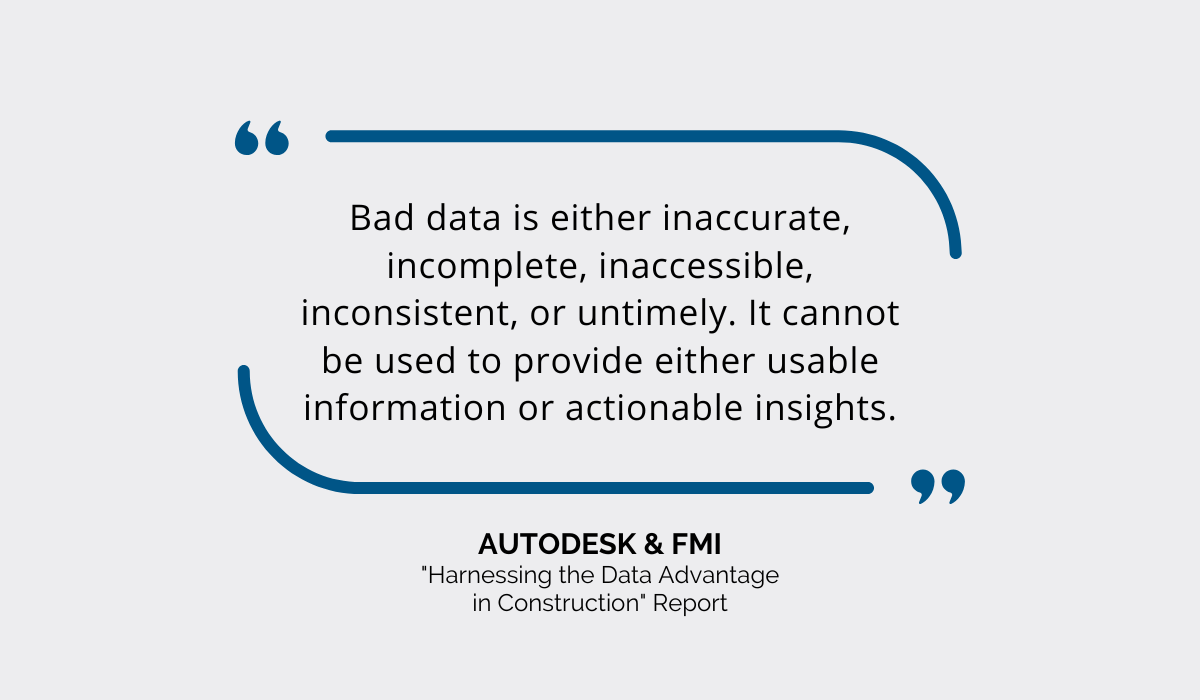
Essentially, bad data is something you want to avoid. It doesn’t help your business. In fact, it may harm its profitability.
Autodesk and FMI tried to find out how much of a profitability killer bad data really is, and the results were staggering, to say the least.
It turns out that, in 2020, the global construction industry lost somewhere around an astounding $1.84 trillion because of the bad decision-making caused by inaccurate and otherwise inadequate data.
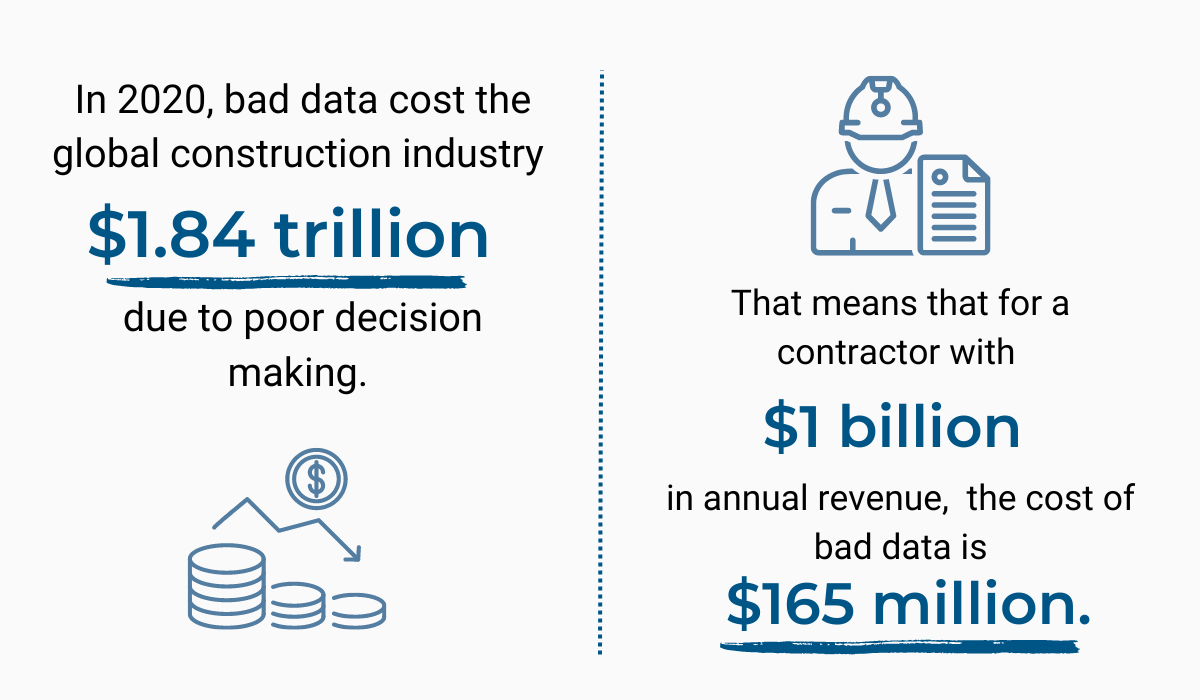
Therefore, if you have that gut feeling that you’re overspending in certain areas, Bluetooth beacons, in tandem with efficient asset tracking software, can be used to confirm your suspicions and reveal any inefficiencies.
If there’s an underutilized piece of equipment on a job site or if your fleet drivers are speeding, braking too hard and taking detours, thus shortening the lifespan of vehicles, beacons will let you know.
In other words, beacon asset tracking equips you with everything you need for better-informed, efficient, and money-saving decision-making.
Versatility of Applications
Although Bluetooth beacons find their use across multiple industries, such as retail, healthcare, and real estate, by looking at their design, you’d think they were made precisely for the construction industry and all its needs.
Due to their size, you can attach beacons to almost any construction asset. From small hand-held tools to heavy machinery—you can track them all.
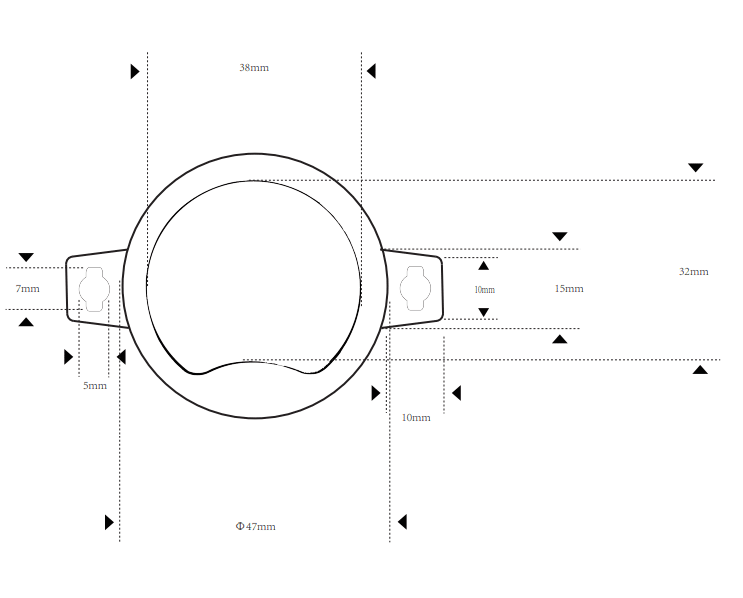
Besides, these devices are made to be durable, with the ability to resist extremely high and low temperatures, water, or shock in case they’re dropped, which makes them perfect for often harsh and hectic environments like construction sites.
What’s more, unlike some of their asset tracking counterparts like GPS, Bluetooth beacons work indoors, too, meaning you can install them in warehouses, large buildings, underground, and even underwater.
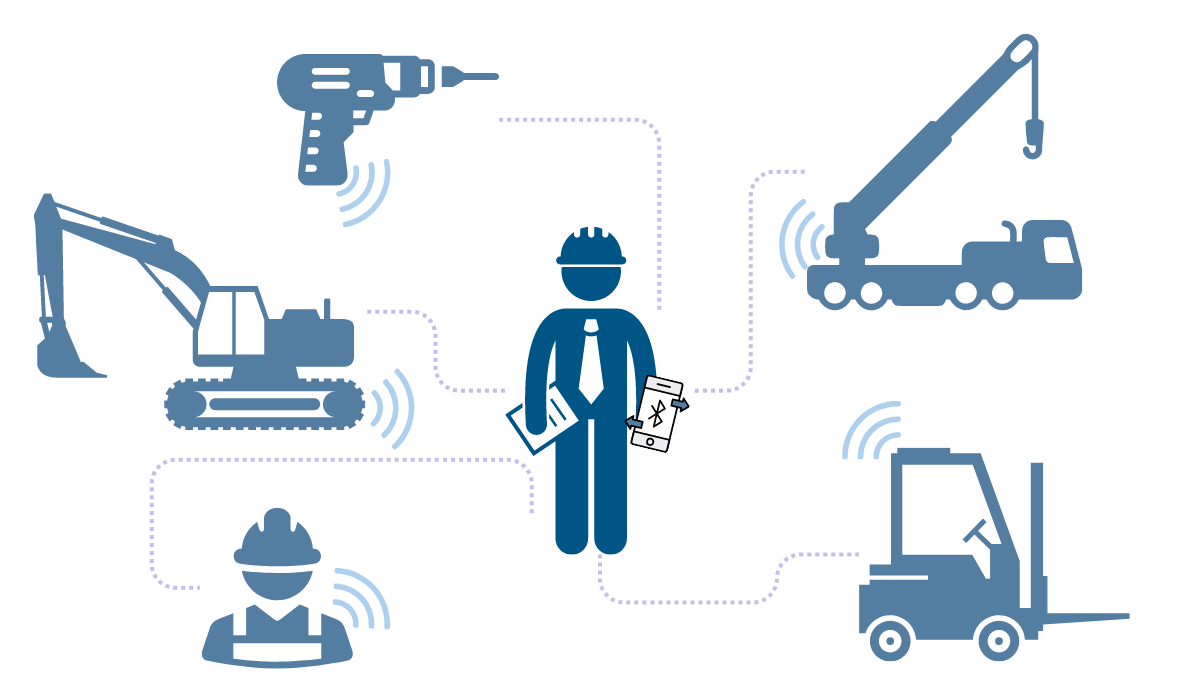
And they don’t just track the asset’s locations, either. Bluetooth beacons can come equipped with different sensors, meaning you can track different aspects of equipment utilization.
Some of the sensors you may find on a beacon are:
- Light sensors
- Movement sensors
- Temperature sensors
- Humidity sensors
- Accelerometers
In other words, asset tracking with Bluetooth beacons is as versatile as it gets.
You can track tools, heavy equipment, fleet, the state of transported materials, or even personnel, as well as different metrics of their performance.
Wide Area Coverage
Another thing that makes beacons so versatile is their ability to cover a lot of ground with their signal.
In fact, Bluetooth beacons stand out among many asset tracking and management solutions when it comes to signal range.
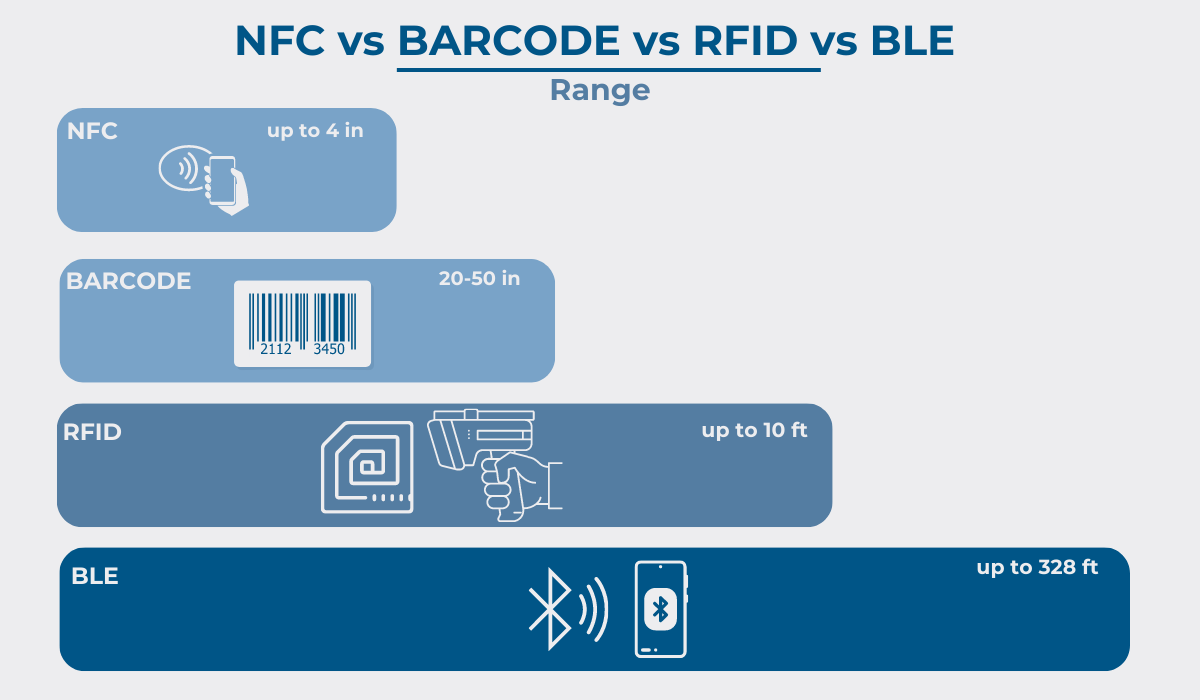
GoCodes Asset Tracking’ own beacons emit a signal that can be picked up by our Android smartphone app within a range of up to 300 feet.
The app then receives the data from the beacons, such as:
- Beacon/asset identity
- Distance between a beacon and a smartphone
- Temperature and acceleration
The GoCodes Asset Tracking app will tell you where the beacons are, even if there’s an object or a wall blocking them.
With our beacons, the entire premises and assets within them can be instantly seen in the app.

What’s more, the app monitors your assets and makes sure they are safe by notifying you immediately when a tagged object is removed from within the smartphone’s range.
That way, the possibility of theft or misplacement is significantly lowered.
High Positioning Accuracy
Another surprising benefit of these small devices is their high positioning accuracy.
Of course, just like with any wireless technology, the beacon’s accuracy can be affected by different factors, such as:
- The number of beacons deployed
- Obstructions to the signal (walls, blocking objects)
- The distance category the beacon operates on
Bluetooth beacons’ proximity detection can be split into three different categories: far, immediate, or near.
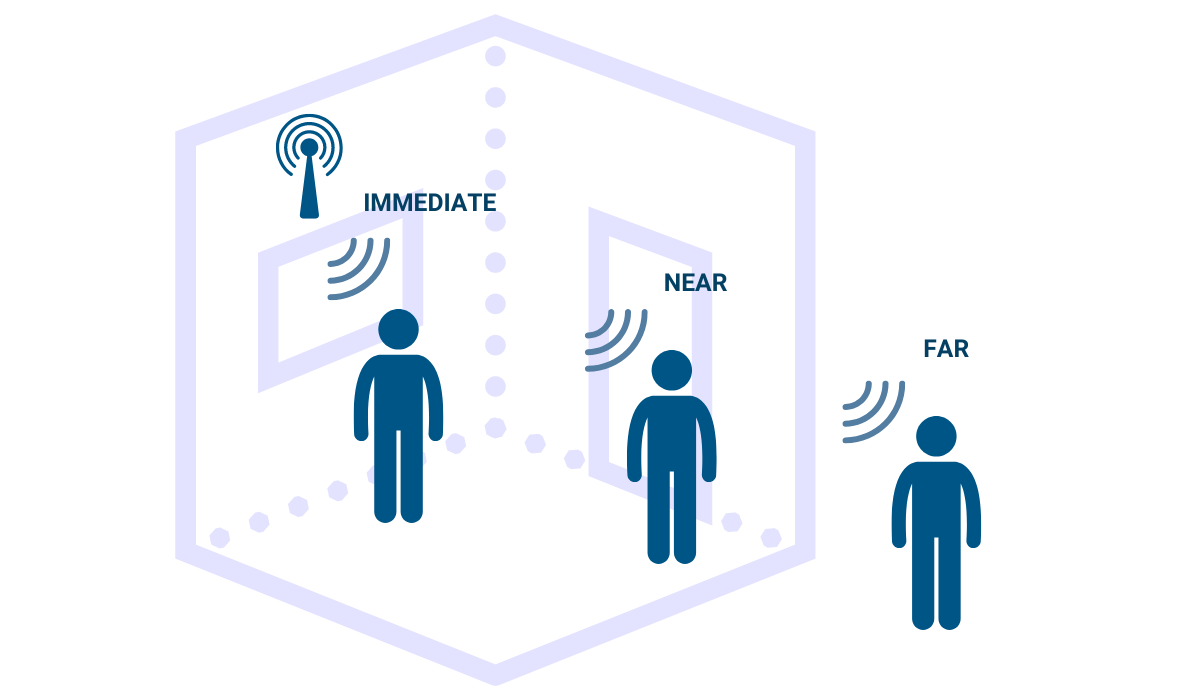
The far operating range provides high accuracy even outside the room the beacon is in.
The immediate range requires the receiver to be in the same room as the beacon for better accuracy, while for the near operating range, very close proximity to the beacon is necessary.
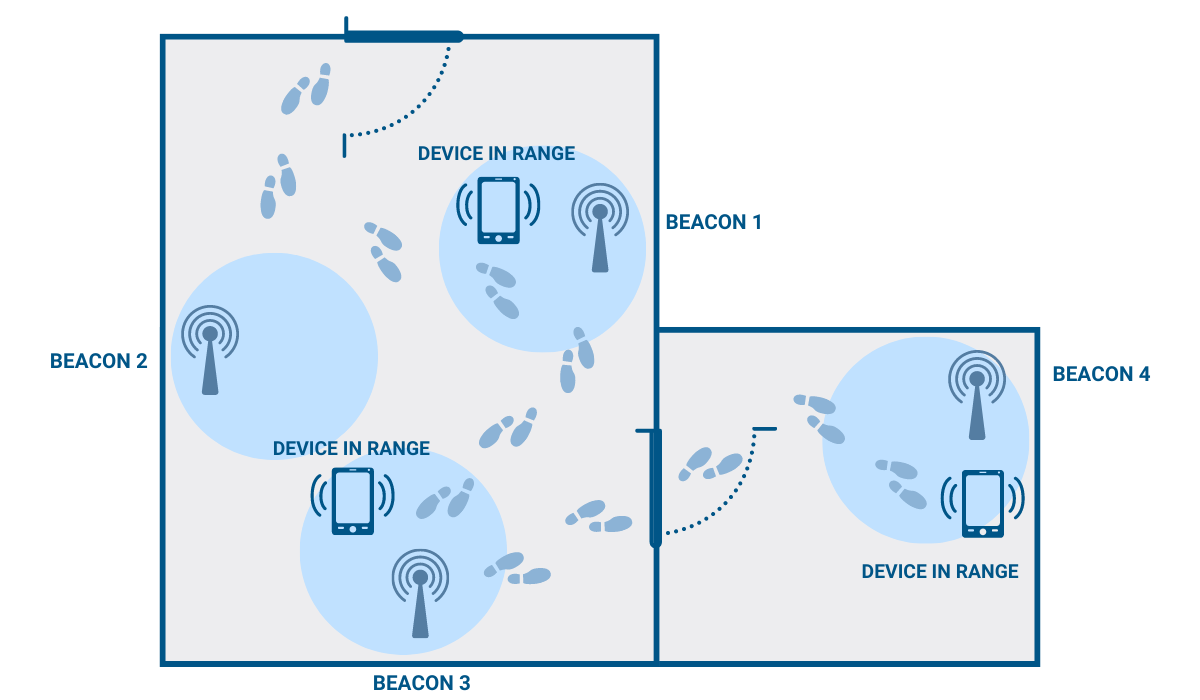
Still, generally speaking, Bluetooth beacons are reliable positioning tools that work both indoors and outdoors.
As a result, they’re ideal for location-based applications, such as asset tracking, indoor navigation, or access control.
Overall, efficient asset tracking requires real-time data, precision, and accuracy. Bluetooth beacons provide just that.
Low Power Usage
Right now, you might be thinking that such precision, accuracy, and wide area coverage must cause the beacon’s battery to drain very quickly.
However, this is not the case. Depending on the vendor and type, the batteries used with Bluetooth beacons can last up to several years.
As their core technology, Bluetooth beacons use Bluetooth Low Energy (BLE), which is the key to their longevity.
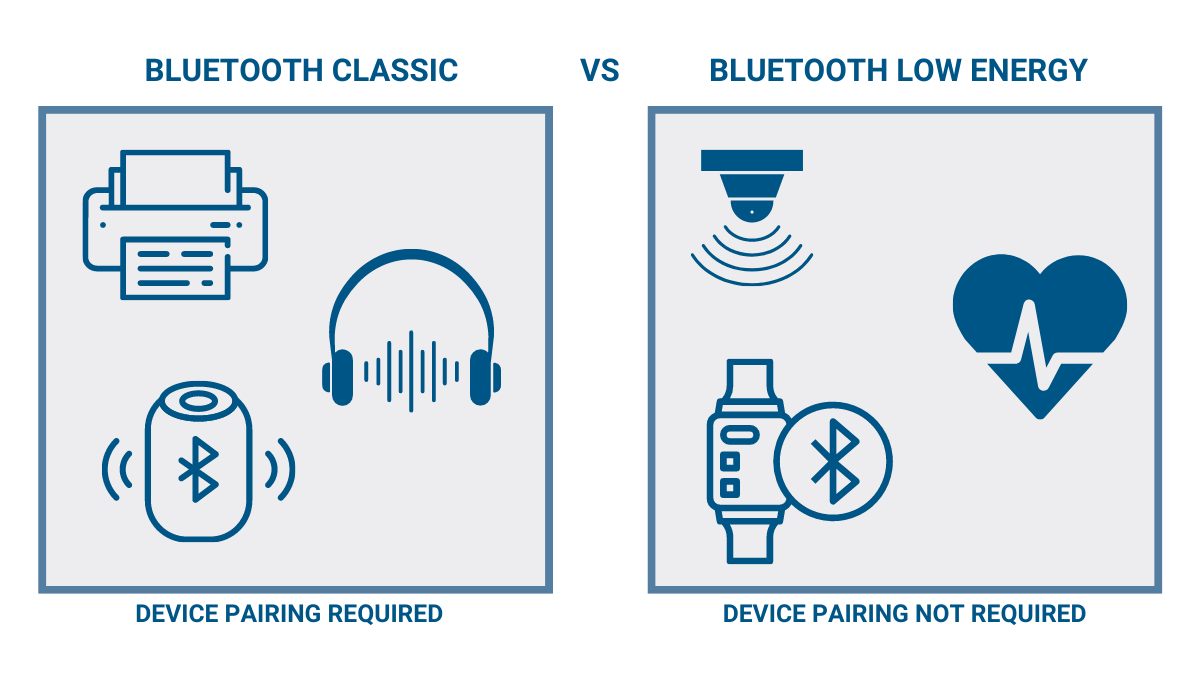
Unlike Classic Bluetooth, which was designed for two-way communication, BLE relies on one-way communication and has a much smaller data capacity.
That’s why the batteries that BLE devices run on last so much longer than those that power Classic Bluetooth.
After all, batteries that need constant changing just don’t make sense for applications such as asset tracking.
Increased Operational Efficiency
The benefits of beacon asset tracking we’ve covered so far sure sound great, but what does all that really mean for your business? How exactly do beacons improve your operations?
Before we answer, let’s consider, for example, a situation where an excavator is stolen in the middle of an ongoing project.
This piece of equipment is no small investment—buying it costs a lot of money. But having it stolen costs even more.
Now you have to find a replacement for that excavator (and do it quickly) and wait for it to arrive while your paid workers sit idle, not being able to continue working, and you try to explain to the client what had happened.
This is definitely not a situation you want to find yourself in.
Luckily, with beacon asset tracking, predicaments like these are a thing of the past.
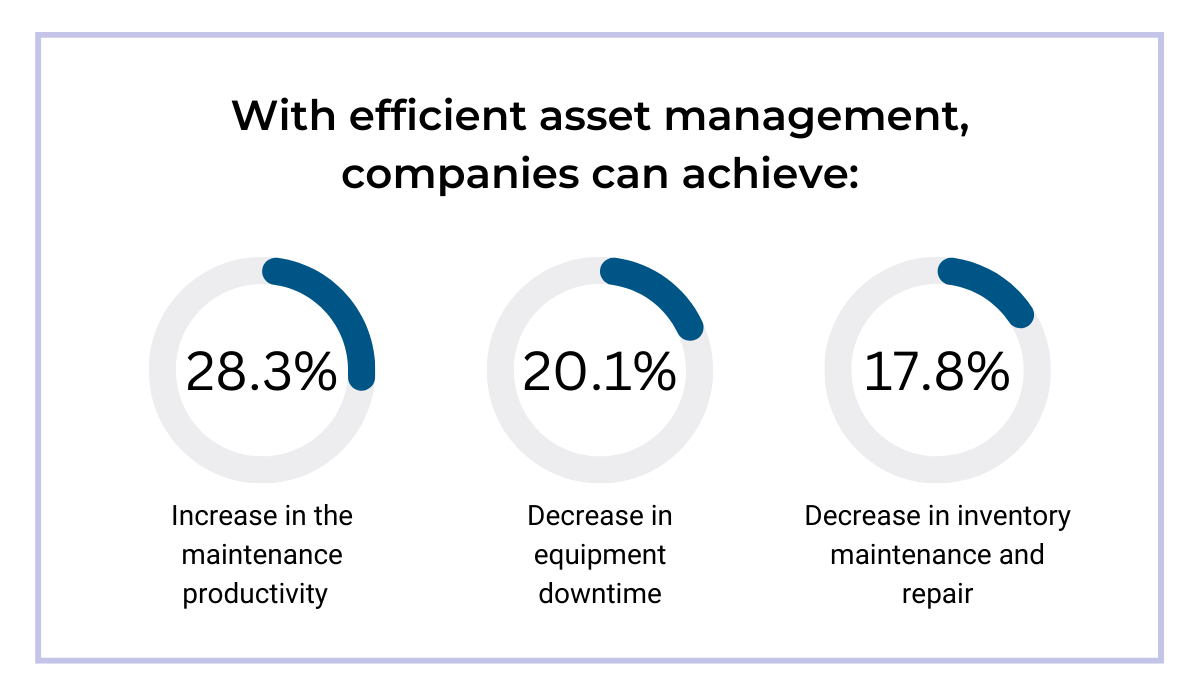
With the implementation of Bluetooth beacons, you’ll see your asset management reach new levels of efficiency and achieve the following:
- Fewer misplaced or stolen assets
- Less unplanned downtime
- Fewer costly project delays
- Improved worker accountability and productivity
- Increased profitability
- Safer job sites
The beacons provide complete transparency of your assets, including their locations, quantities, and utilization.
This means there’s less room for mistakes, miscommunication, and any costly issues resulting from these mistakes.
Talk about efficiency!
Conclusion
In short, Bluetooth beacons are compact, cost-effective, durable, and versatile, with long service life and the ability to cover wide areas.
What more could you ask of an asset tracking tool?
Whether you use beacons in combination with your current asset tracking solution or as a standalone system, they’ll surely transform your business for the better by improving your asset management process and increasing overall operational efficiency.
If that sounds like a good deal, make sure to give Bluetooth beacons a thought or two.





